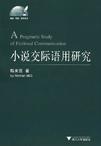小说交际语用研究
出版时间:2008 出版社:浙江大学出版社 作者:梅美莲 页数:180
Tag标签:无
内容概要
小说毫无疑问是一种交际,是作者和读者之间的交际,但它又是一种特殊形式的交际,和一般意义上的语言交际有着明显的不同,因为交际的双方不见面,么有也不可能互动,作者的交际目的也不是通过他一个人的话语来向读者表白,而是通过它笔下的叙述,描述以及任务的对白来最终向读者传递它的信息,对于这样一种特殊的语言交际方式,梅博士首先作了具体、详尽的剖析,明确了小说交际是通过多种途径在多种语境中进行的。这是本专著的一个重要贡献,它为下一步的语用分析打下了基础,明确了分析的对象和途径。
书籍目录
AbstractList of AbbreviationsList of FiguresChapter 1 Introduction1.1 Lead-in remarks1.2 Rationale of the study1.2.1 Rationality, possibility and feasibility of the study1.2.2 Necessity of the study1.3 Objectives, methods and data of the study1.4 Layout of the bookChapter 2 Various Studies of Literature2.1 Introduction2.2 Literary studies of literature2.2.1 Studies focusing on the nature and function of literature2.2.2 Studies focusing on the author2.2.3 Studies focusing on the reader2.2.4 Studies focusing on the text(s)2.2.5 Studies focusing on the context2.3 Linguistic studies of literature2.3.1 Stylistic studies2.3.2 Narratological studies2.3.3 Communicative studies2.4 Pragmatic studies of literature2.4.1 Empirical studies2.4.2 Theoretical studies2.5 Justification for the pragmatic study of fictional communication2.5.1 Rationality to study literary communication from the pragmatic perspective2.5.2 Possibility to study literary communication from the pragmatic perspective2.5.3 Feasibility to study literary communication from the pragmatic perspective2.5.4 Necessity to build a pragmatic framework of literary communication2.5.5 Necessity to build a pragmatic framework of fictional communication2.6 ConclusionChapter 3 Pragmatic Studies of Communication3.1 Introduction3.2 Definition of communication3.3 Participants of communication3.4 Meaning in communication3.5 Context of communication3.5.1 Definition of context3.5.2 Dimensions of context3.6 Pragmatic strategies of communication3.6.1 Definition of pragmatic strategy3.6.2 Categorization of pragmatic strategies3.6.3 Recognition of pragmatic strategies3.7 ConclusionChapter 4 Fictional Communication4.1 Introduction4.2 Definition of fictional communication4.3 Participants of fictional communication4.3.1 The author4.3.2 The narrator4.3.3 The characters4.3.4 The reader4.4 Means of fictional communication4.4.1 Means of the communication between the characters4.4.2 Means of the communication between the narrator and the reader4.4.3 Means of the communication between the author and the reader4.5 ConclusionChapter 5 Contexts of Fictional CommunicationChapter 6 Pragmatic Strategies of Fictional CmmunicationChapter 7 Construction and Reconstruction of Meanings in Fintional CommunicationChapter 8 ConclusionBibliography
图书封面
图书标签Tags
无
评论、评分、阅读与下载
